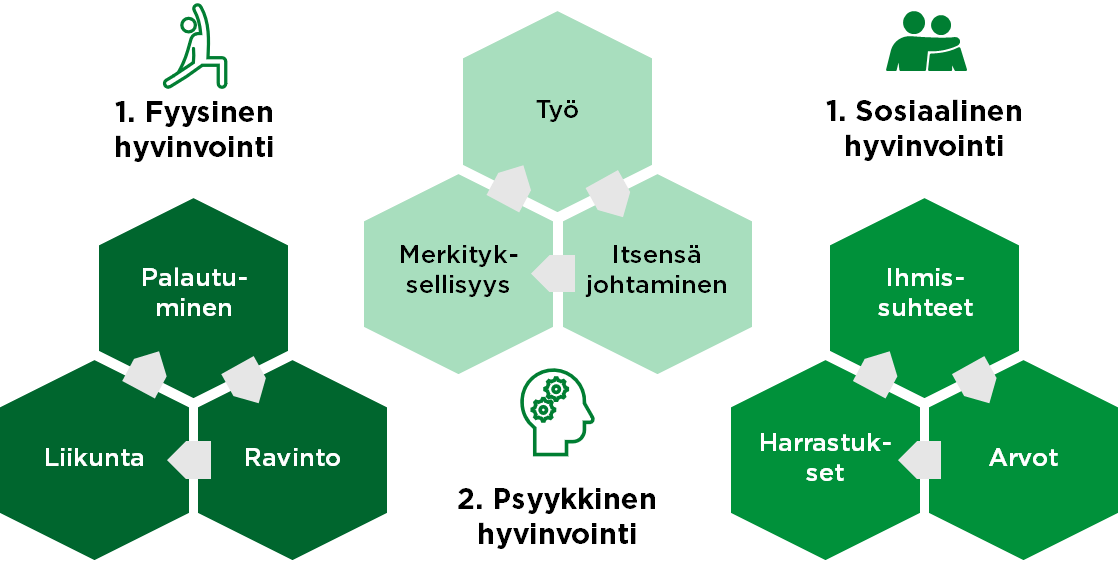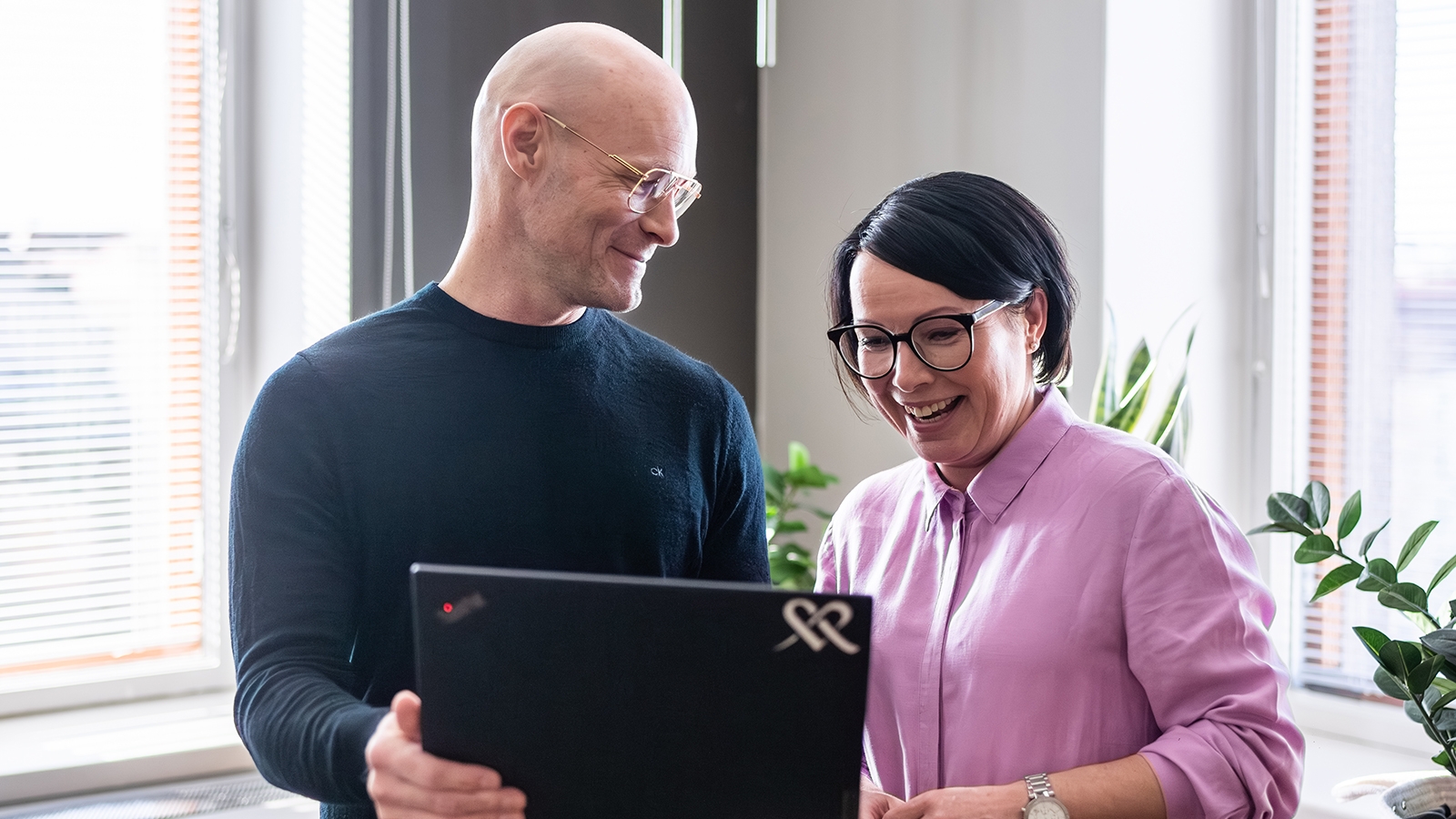Employee’s wellbeing
Working life has drastically changed within the past few years. Work may place demands on efficiency and digitalisation may change people’s ways of working. Working life and its changes require employees to maintain their energy levels and constantly adapt to new things, which may put a strain on their wellbeing. Work may also occasionally infiltrate the employees’ free time.
Because of this, occupational health care services have increasingly started to promote occupational wellbeing alongside traditional medical care. Employers offer their employees services related to occupational health and wellbeing but we recommend comprehensively taking care of your energy levels and recovery. Learn more about the following elements of wellbeing.
In addition, learn more about Mehiläinen’s health check-ups.
What is occupational wellbeing?
Occupational wellbeing is created through working in a functional work community. Occupational wellbeing stems from good ergonomics, experiences of having control over the work and the opportunity of being included as well as good managerial work and leadership. However, we humans are a sum of many parts, which is why each person’s occupational wellbeing is influenced by their comprehensive wellbeing. If the person is unable to recover from work during their free time or if they are troubled by personal issues, their worries or fatigue may follow them to the workplace and influence not only their own occupational wellbeing but also that of the entire work community.
Browse Mehiläinen’s wellbeing service store

Sufficient sleep and rest
Busy working life or a hectic weekly schedule may become a permanent lifestyle with no time for sufficient rest and sleep. Sleep and rest affect concentration, efficiency at work as well as mood. Learn more about insomnia and its treatment.
Learn more:
Stress and recovery
Mehiläinen’s occupational psychologists prepare wellbeing programmes (First Beat) for individuals and groups. The wellbeing analysis uses heart rate variability to find out how well the person recovers after stress during the day. Long-term stress makes it difficult for the body to recover after each working day. Do you feel rejuvenated at the end of the day? Does the rhythm of your work allow you to recover during your breaks? Do you possess the means for relieving stress and promoting recovery? First Beat offers answers to these issues.
Sometimes, we need to practise recovery, and one way to do that is called mindfulness.
Learn more:
Energy levels at work
Sometimes, the challenges of haste, stress and time management may sneak up on you at work and, if prolonged, pose a threat to your energy levels at work. Identify early signs of fatigue and burnout and, if necessary, seek help from occupational health care services or an occupational psychologist. Discussions can help you find tools for understanding your ways of working and making changes.
Learn more:
Burnout
Burnout may develop as a consequence of prolonged work stress. The risk of burnout is elevated if the conditions at work are stressful, the employee is forced to rush things and, for example, the atmosphere at work causes them stress. Learn more about the symptoms and treatment of burnout.
Learn more:
Is your diet healthy and regular?
Lunch break, breakfast, sufficient water intake – our nutrition also plays a role in our wellbeing and energy levels. Learn more about a diverse diet and mealtimes.
Learn more:
Tackle stress with exercise and sports
After a day at work, you may feel tired and not in the mood for exercise. Studies show that physical exercise has vast impacts on your health. Many people find that exercise helps them manage stress and sleep better. Simply adding small things, such as taking the stairs instead of a lift, to your everyday activities may make you feel more energetic while increasing the amount of exercise you get in a day. See our occupational physiotherapist’s tips for increasing physical exercise in your daily life. After a workout, remember to give your body the chance to recover.
Learn more:
Interaction in the work community
Interaction between employees and team members does not always appear on its own and must be actively developed. Learn about the significance of different styles of interaction in a work community. A mutually agreed and created work culture creating the basis for good and open atmosphere plays a key role. Sometimes, busy working life and tight schedules leave little room for interaction. We may be too busy to offer help to our teammates. Work communities are not always without their problems but they can be developed. Mehiläinen offers coaching for work communities and helps communities evolve. See also our article on bullying at the workplace, how to prevent it and take action.
Learn more:
Working memory
Our work and concentration is constantly interrupted by e-mails, text messages and other disruptions. We may even experience problems with memory and concentration to the extent of seeking occupational health care. Issues with memory should not be taken lightly, even if the cause is usually nothing so alarming as a disorder causing memory loss. Learn more about working memory and its treatment as well memory issues among working-age people.
